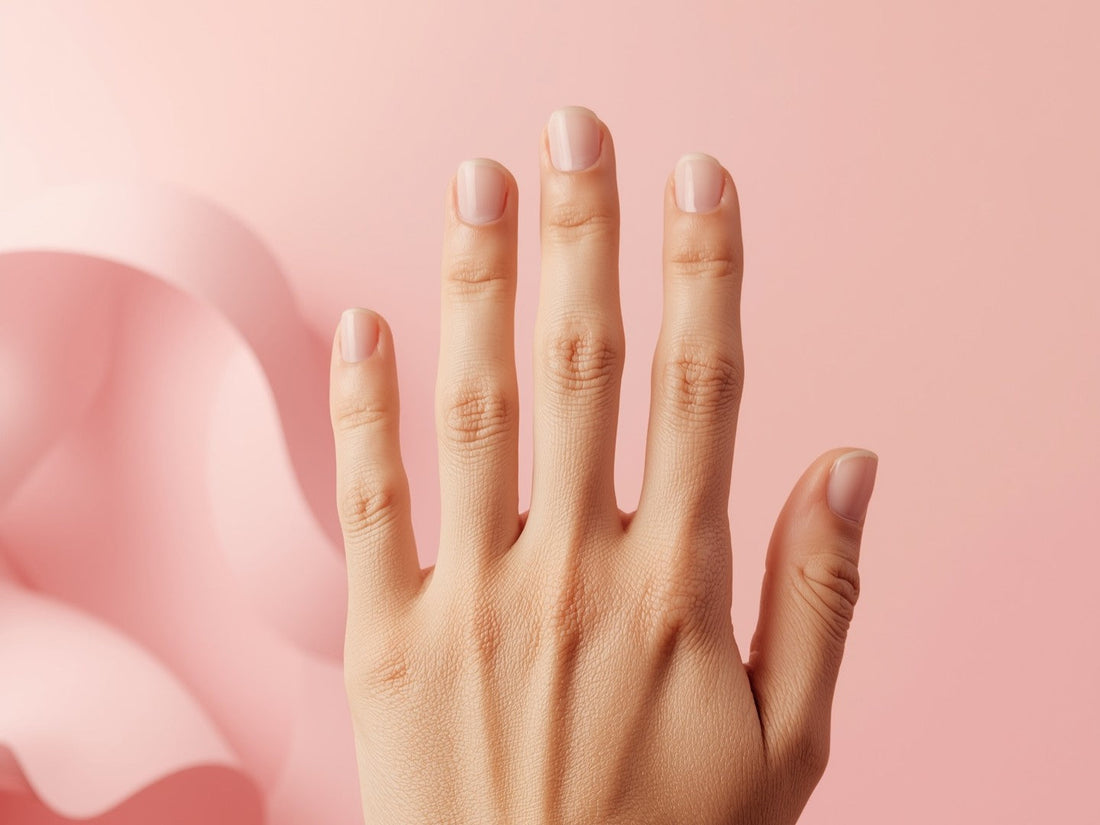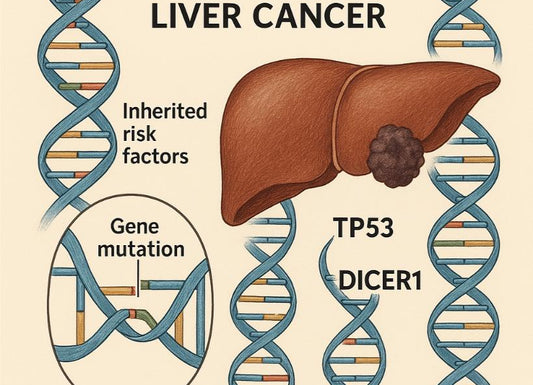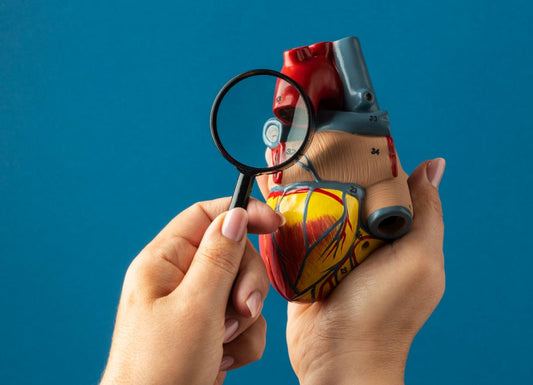Liver Failure and Nail Changes: What to Know
 Written By
Abel Tamirat, MD
Written By
Abel Tamirat, MD

Your nails can tell you a lot about your health—including your liver. In people with chronic liver disease or liver failure, nail changes are sometimes an early visible clue. While these changes aren’t always specific to the liver, they’re worth noticing and mentioning to your doctor.
This article explains how liver failure can affect your nails, what signs to watch for, why they happen, and how they relate to overall liver function. If you have a chronic liver condition or suspect one, understanding these nail signs can help you take action earlier.
What is liver failure?
Liver failure happens when the liver becomes too damaged to function properly. It can be sudden (acute) or develop slowly over time (chronic or end-stage liver disease). The liver plays many essential roles in the body:
-
Filtering toxins from the blood
-
Producing proteins needed for blood clotting
-
Regulating blood sugar and cholesterol
-
Making bile for digestion
-
Storing vitamins and nutrients
When the liver fails, many body systems are affected—including your skin, eyes, hair, and nails.
If you’re interested in understanding broader systemic effects, explore the final symptoms of end-stage liver disease.
Types of liver failure
Acute Liver Failure (ALF)
This happens suddenly, often within days. It may be caused by:
-
Drug toxicity (especially acetaminophen)
-
Acute viral hepatitis (hepatitis A, B, or E)
-
Autoimmune hepatitis
-
Mushroom poisoning
-
Wilson’s disease (copper buildup)
Symptoms appear quickly and can include jaundice, confusion, bleeding, and swelling. Nail changes are less likely unless ALF becomes prolonged.
Learn more about how cirrhosis progresses in our resource on end-stage liver cirrhosis symptoms and care.
Chronic Liver Failure (Cirrhosis)
Cirrhosis is the late stage of chronic liver disease. It’s caused by long-term damage from:
-
Hepatitis B or C
-
Alcohol misuse
-
Nonalcoholic fatty liver disease (NAFLD)
-
Genetic conditions (hemochromatosis, alpha-1 antitrypsin deficiency)
Over time, chronic inflammation and scarring impair liver function. Nail changes are more common in this group.
How does liver failure affect nails?

The liver is key to maintaining blood proteins, vitamins, hormones, and immune balance. When liver function declines, it can:
-
Lower albumin levels (a key blood protein)
-
Cause poor blood flow to the nail matrix
-
Lead to vitamin and mineral deficiencies (iron, zinc, biotin, B12)
-
Allow toxins to build up in the body
All of these contribute to visible nail changes.
Common nail changes in liver failure
1. Terry’s Nails
One of the best-known liver-related nail signs. Features:
-
Nail appears mostly white with a narrow pink or brown band at the tip
-
Affects all fingers symmetrically
-
Associated with cirrhosis and aging
This change reflects poor blood flow and protein loss in the nail bed.
2. Muehrcke’s Lines
These are paired, horizontal white lines that:
-
Run parallel across the nail bed
-
Do not move with nail growth
-
Are linked to hypoalbuminemia (low albumin levels)
They often fade if albumin levels are restored.
3. Clubbing
This is a broader condition that can occur in liver disease and other illnesses:
-
Fingertips become bulbous and rounded
-
Nails curve downward
-
Nail angle changes to >180 degrees
Clubbing is often linked to chronic hypoxia, but in liver failure, it’s more common in conditions like biliary cirrhosis or hepatopulmonary syndrome.
4. Leukonychia
This means white nails and includes:
-
Complete whitening of the nail plate
-
May resemble Terry’s nails but without the distal band
-
Often linked to low albumin or severe liver disease
Partial leukonychia can also occur in trauma, infection, or systemic illness.
5. Onycholysis
This is when the nail lifts or separates from the nail bed:
-
Can be partial or complete
-
May be due to poor nutrition, fungal infections, or immune dysfunction
-
Sometimes seen in people with long-standing liver disease
Onycholysis makes nails more fragile and increases risk of secondary infections.
6. Koilonychia (spoon nails)
This is a scooped-out appearance, often linked to iron deficiency:
-
More common in people with anemia
-
Can occur in chronic liver disease, especially with blood loss or malnutrition
Did you know your skin might show early signs too? Read our guide on skin manifestations of liver disease.
Why these nail changes matter

Nail signs are not just cosmetic—they can reflect serious internal issues. In liver failure, they often:
-
Signal worsening protein deficiency
-
Suggest vitamin or mineral imbalance
-
Indicate reduced blood flow or oxygenation
These changes may develop slowly and go unnoticed. Paying attention to them can help catch liver decompensation earlier.
Some of these changes may also be linked to vitamin deficiencies. Learn which vitamins help liver repair.
Nail signs that mimic liver issues
Not all white or ridged nails point to liver disease. Similar signs can appear in:
-
Kidney disease
-
Heart failure
-
Malnutrition
-
Chemotherapy side effects
-
Fungal infections
-
Psoriasis or eczema
That’s why it’s important to consider the full picture, including lab results and other symptoms.
Other physical signs of liver disease
In addition to nail changes, liver failure may cause:
-
Jaundice (yellowing of the skin and eyes)
-
Ascites (fluid buildup in the belly)
-
Easy bruising or bleeding
-
Red palms (palmar erythema)
-
Spider angiomas (tiny red spots from dilated blood vessels)
-
Muscle wasting
-
Fatigue and confusion
These signs help confirm whether the nail changes are liver-related.
Explore how to tell if your liver is struggling with these early clues.
How nail changes are evaluated

If you or your doctor notice unusual nails, follow-up testing usually includes:
-
Liver function tests (LFTs): AST, ALT, bilirubin, and albumin
-
Clotting tests: INR or PT to check liver-made clotting factors
-
Nutrient levels: iron, zinc, biotin, B12, vitamin D
-
Imaging: ultrasound, CT scan, or FibroScan
-
Liver biopsy: in complex or unclear cases
Nail signs may be the tip of the iceberg. A deeper look is needed to find the cause.
Can liver-related nail changes be reversed?
It depends. Some nail signs, like Muehrcke’s lines or Terry’s nails, may improve if liver function or albumin levels recover.
Others, like clubbing or leukonychia, may persist even if the disease is treated. In cases of cirrhosis or permanent scarring, the changes can become irreversible.
Good nutrition, stable glucose control (in diabetics), and abstaining from alcohol can help preserve nail health.
Learn about how to support liver regeneration if your condition is improving.
Nail care tips for people with liver disease
-
Keep nails trimmed to prevent breaks or infection
-
Avoid harsh nail chemicals or glue
-
Use moisturizers to prevent dryness
-
Watch for signs of fungal infection (yellow, thick nails)
-
Avoid trauma or picking at the cuticle
If you have bleeding issues, use caution with manicures and avoid sharp tools.
When to see a doctor
Make an appointment if you notice:
-
Sudden or unexplained nail changes
-
White bands or fully white nails
-
Curving or thickening nails
-
Separation or pain in the nail bed
-
Other signs of liver disease (jaundice, fatigue, swelling)
If you already have a liver condition, regular checkups and blood tests are key. Mention nail changes at your next visit.
Takeaway
Liver failure can affect nearly every system in the body—including your nails. Nail changes like Terry’s nails, clubbing, leukonychia, or white bands can indicate poor protein production, circulation problems, or vitamin deficiencies.
These signs are more common in chronic liver failure and cirrhosis. While not always specific, they offer important clues about internal health. If you notice changes, get checked. Managing your liver condition, eating well, and staying monitored can help prevent worsening signs.
Want to track signs of liver disease at home? Use our at-home liver check tools or subscribe to our newsletter for tips, checklists, and updates.
Related Resources
References
Dogra, S., & Jindal, R. (2011). Cutaneous manifestations of common liver diseases. Journal of Clinical and Experimental Hepatology, 1(3), 177–184. https://doi.org/10.1016/S0973-6883(11)60235-1
Ghosn, S. H., & Kibbi, A.-G. (2008). Cutaneous manifestations of liver diseases. Clinics in Dermatology, 26(3), 274–282. https://doi.org/10.1016/j.clindermatol.2008.02.001
Godara, S. K., Thappa, D. M., Pottakkatt, B., Hamide, A., Barath, J., Munisamy, M., & Chiramel, M. J. (2017). Cutaneous manifestations in disorders of hepatobiliary system. Indian Dermatology Online Journal, 8(1), 9–15. https://doi.org/10.4103/2229-5178.198760
Goldman, L. (2023, November 22). Cutaneous stigmata of cirrhosis: Pictures and when to get help. Healthline; Healthline Media. https://www.healthline.com/health/cutaneous-stigmata-of-cirrhosis
Koulaouzidis, A., Bhat, S., & Moschos, J. (2007). Skin manifestations of liver diseases. Annals of Hepatology, 6(3), 181–184. https://doi.org/10.1016/s1665-2681(19)31926-x
Terry’s nails: Symptoms, causes & treatment. (2022, May 4). Cleveland Clinic. https://my.clevelandclinic.org/health/symptoms/22890-terrys-nails

Dr. Abel Tamirat is a licensed General Practitioner and ECFMG-certified international medical graduate with over three years of experience supporting U.S.-based telehealth and primary care practices. As a freelance medical writer and Virtual Clinical Support Specialist, he blends frontline clinical expertise with a passion for health technology and evidence-based content. He is also a contributor to Continuing Medical Education (CME) programs.



